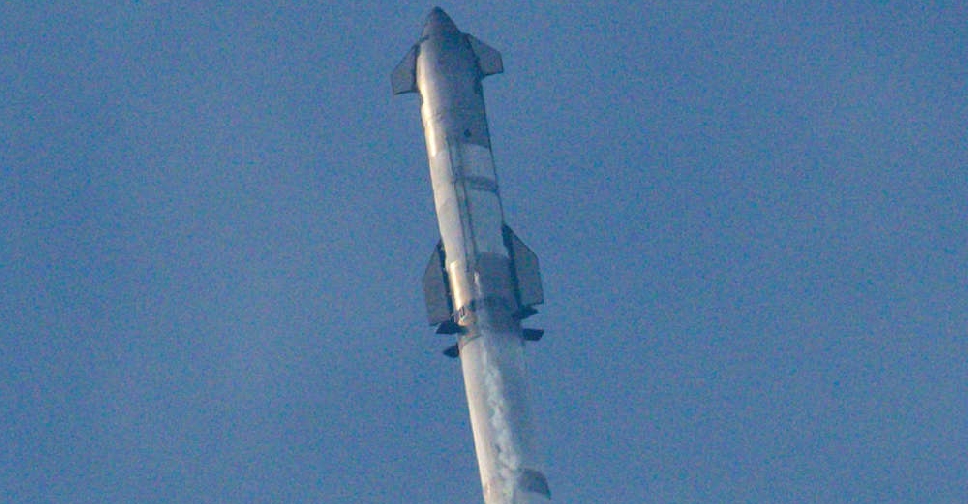
The SpaceX Starship, a futuristic craft designed to eventually send astronauts to the moon and beyond, was successfully launched on Thursday in a historic third test flight from South Texas.
The two-stage rocketship, taller than the Statue of Liberty, blasted off from the company's Starbase launch site near Boca Chica on the Gulf Coast of Texas near Brownsville, on an uncrewed flight to space.
The test mission, lasting far longer than previous attempts last year, marked only the third attempt to fly Starship mounted atop its towering Super Heavy rocket booster.
Both were designed and built by SpaceX, the rocket and satellite company founded in 2002 by billionaire entrepreneur Musk.
The first and second Starship launches both ended explosively last year, with the vehicles detonating before the completion of each flight's mission objectives.
A live SpaceX webcast of the liftoff had showed the rocketship rising from the launch tower into the morning sky as the Super Heavy's cluster of powerful Raptor engines thundered to life in a ball of flame and billowing clouds of exhaust and water vapour.
The launch came less than 24 hours after federal regulators granted SpaceX a launch licence for the test.
Liftoff of Starship! pic.twitter.com/FaNcasuKaq
— SpaceX (@SpaceX) March 14, 2024
Unlike the first two test flights last year, aimed mainly at demonstrating that the spacecraft's two stages can separate after launch, plans for Thursday's test called for an attempt to open Starship's payload door and reignite one of its engines in space.
Each of the previous flights were routed toward a planned crash landing near the Hawaiian islands in the Pacific, while the latest flight was targeting a splashdown zone in the Indian Ocean.
Even if it achieves more of its test objectives than before, SpaceX acknowledged a high probability that Starship's latest flight would end up like the first two, with the vehicle blowing itself to bits before its intended trajectory is complete.
Musk, SpaceX's billionaire founder and CEO, has said the rocket should fly hundreds of uncrewed missions before carrying its first humans. And several other ambitious milestones overseen by NASA are needed before the craft can execute a moon landing with American astronauts.
Still, Musk is counting on Starship to fulfill his goal of producing a large, multipurpose next-generation spacecraft capable of sending people and cargo to the moon later this decade, and ultimately flying to Mars.
Closer to home, Musk also sees Starship as eventually replacing the SpaceX Falcon 9 rocket as the workhorse in the company's commercial launch business that already lofts most of the world's satellites and other payloads to low-Earth orbit.



 Harvey Weinstein hospitalised days after conviction overturned
Harvey Weinstein hospitalised days after conviction overturned
 Gold Titanic pocket watch sells for 4.1m dirham at auction
Gold Titanic pocket watch sells for 4.1m dirham at auction
 Arab ministerial coordination meeting reiterates ending Gaza conflict
Arab ministerial coordination meeting reiterates ending Gaza conflict
 Lebanon moves towards accepting ICC jurisdiction for war crimes on its soil
Lebanon moves towards accepting ICC jurisdiction for war crimes on its soil

